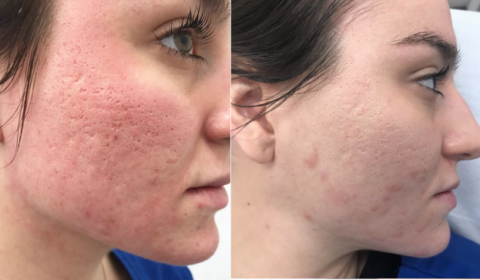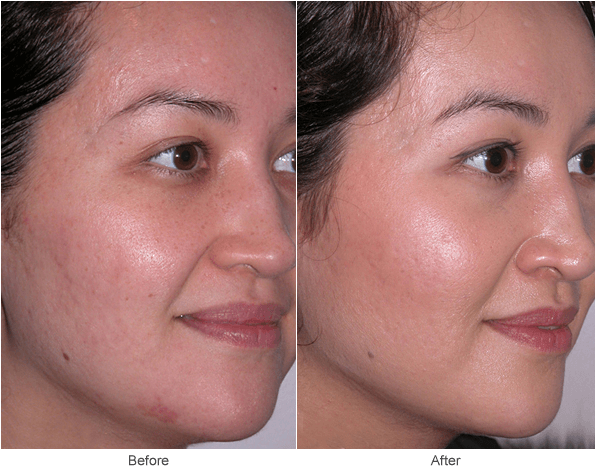Specialist Acne and Acne Scars Treatment: Resilient Results for More Clear Skin
Specialist Acne and Acne Scars Treatment: Resilient Results for More Clear Skin
Blog Article
A Comprehensive Overview to Taking Care Of Skin Conditions: Focusing on the Treatment of Acne Marks
Acne scars stand for a considerable concern for lots of individuals, often affecting self-worth and general skin health. Understanding the numerous types of acne scars, such as atrophic and hypertrophic, is vital for reliable administration and treatment.
Understanding Acne Scars
Recognizing acne scars involves identifying the complex interplay between skin recovery and the inflammatory procedures that occur throughout acne outbreaks. Acne creates when hair roots come to be clogged with oil, dead skin cells, and bacteria, leading to inflammation. This inflammatory action is essential for battling infection however can also cause damages to the skin's tissue.
When the body tries to heal itself, it generates collagen, a healthy protein necessary for skin structure. However, the amount and quality of this collagen can vary, causing different sorts of scars. Factors influencing scar development consist of the severity of the acne, specific skin type, genes, and the body's healing reaction.
Furthermore, very early treatment in acne treatment can play a pivotal role in stopping scarring. Timely administration of outbreaks lessens inflammation and tissue damage, which are essential consider mark growth. Education on correct skincare and therapy options is important for individuals vulnerable to scarring. Ultimately, comprehending the underlying systems of acne and its healing process is crucial for effective management and prevention of acne marks.
Types of Acne Marks
The complexity of acne scars can be categorized right into several unique types, each reflecting the underlying skin damages and recovery feedback. One of the most common types include atrophic scars, hypertrophic scars, and keloids.
These marks can better be classified into icepick, boxcar, and rolling scars, each differing in shape and depth. Icepick marks are deep and slim, resembling tiny slits, while boxcar marks have a wider, much more angular look.
Hypertrophic scars, on the various other hand, are increased and result from an overflow of collagen throughout healing. These scars might vary in size and can in some cases discolor gradually however might stay famous.
Keloids are a more severe kind of hypertrophic scarring, prolonging past the original injury website and commonly needing a lot more aggressive therapy alternatives. Recognizing these kinds is essential for identifying the most effective therapy technique customized to a person's certain mark kind and skin problem.
Topical Treatments

Topical therapies play an important duty in managing acne scars, offering patients an array of options targeted at boosting skin appearance and look. These therapies primarily concentrate on promoting skin regrowth, decreasing coloring, and improving overall complexion.
Among the most extensively made use of topical representatives is retinoids, which are derivatives of vitamin A. Retinoids promote collagen manufacturing and accelerate cell turn over, assisting to decrease the look of scars over time. Furthermore, alpha hydroxy acids (AHAs) and beta hydroxy acids (BHAs) can scrub the skin, removing dead skin cells and promoting a smoother surface.
Another reliable group consists of topical anti-oxidants, such as vitamin C, which can help to lighten hyperpigmentation related to acne marks while giving anti-inflammatory benefits. Moreover, silicone gels and sheets have been revealed to hydrate and flatten scars, browse around these guys making them less visible.
Hydroquinone is often used for its skin-lightening buildings, although it must be used very carefully as a result of potential negative effects. Incorporating creams that have components like hyaluronic acid can even more sustain skin healing and enhance appearance. For ideal results, it is suggested to seek advice from a skin specialist for personalized treatment recommendations.

Professional Treatment Alternatives
When it comes to resolving more serious acne scars, individuals usually turn to professional treatment alternatives that important source can deliver more significant results than topical treatments alone. These interventions are normally carried out by dermatologists or accredited specialists and include different methodologies customized to specific skin types and mark severity.
One of the most typical treatments is chemical peels, which utilize acids to advertise and scrub the skin regeneration. This approach can substantially lower the appearance of surface scars. Microneedling, one more efficient choice, involves producing micro-injuries in the skin to stimulate collagen manufacturing, improving structure and decreasing marks.
Laser therapy is additionally widely used, with fractional lasers particularly targeting marked areas while preserving bordering skin. This approach can produce remarkable renovations in skin look over a number of sessions. In addition, dermal fillers are used to bring back volume and ravel unequal skin surface areas, giving immediate, albeit short-term, results.
Way Of Living and Natural Remedy
Integrating way of life adjustments and natural remedy can play a considerable duty in handling acne scars, enhancing specialist therapies. Keeping a well balanced diet plan rich in anti-oxidants, vitamins, and minerals can assist in skin healing - skin rejuvenation treatments. Foods high in vitamin C, such as citrus fruits, and those having zinc, like seeds and nuts, promote skin regrowth and help in reducing inflammation
Hydration is also crucial; alcohol consumption ample water keeps the skin hydrated, assisting in its all-natural fixing procedures. Routine exercise improves blood flow, which can improve nutrient delivery to the skin and improve general skin tone.
In addition to dietary modifications, integrating topical home remedies can be helpful. Natural active ingredients why not look here such as aloe vera, tea, and honey tree oil have anti-inflammatory and anti-bacterial buildings, which might aid in minimizing the appearance of scars. Scrubing the skin with mild scrubs can additionally advertise cell turnover, assisting in the fading of marks over time.
In addition, developing a regular skincare routine that consists of sunlight protection is essential, as UV direct exposure can dim marks. By incorporating these way of life modifications and home treatments, individuals can enhance their skin's healing process and attain a much more also skin tone.
Conclusion
Efficient administration of acne scars necessitates a thorough understanding of their kinds and the hidden devices entailed in scar development. A mix of topical treatments, expert treatments, and lifestyle modifications can substantially improve skin healing and reduce scar visibility. Highlighting the importance of collagen production, a balanced diet regimen, and a constant skincare regular contributes to boosted skin health. Inevitably, a complex approach ensures optimum results in the treatment of acne scars, fostering restored self-confidence in individuals impacted by this problem.
Recognizing acne scars includes acknowledging the complicated interplay between skin healing and the inflammatory processes that occur during acne break outs. Factors affecting mark development consist of the seriousness of the acne, specific skin kind, genes, and the body's healing response.
These scars can further be classified into icepick, boxcar, and rolling scars, each varying in shape and deepness. Icepick marks are deep and slim, looking like tiny slits, while boxcar marks have a bigger, extra angular look (skin rejuvenation treatments).Efficient administration of acne marks requires an extensive understanding of their types and the underlying devices entailed in scar formation
Report this page